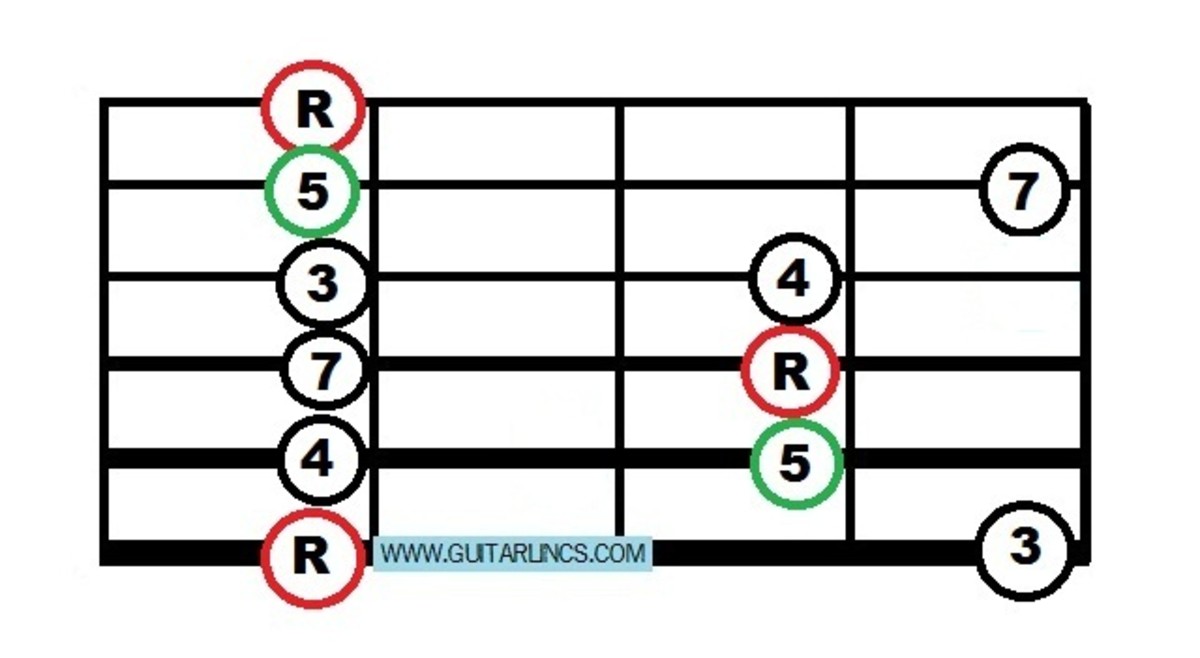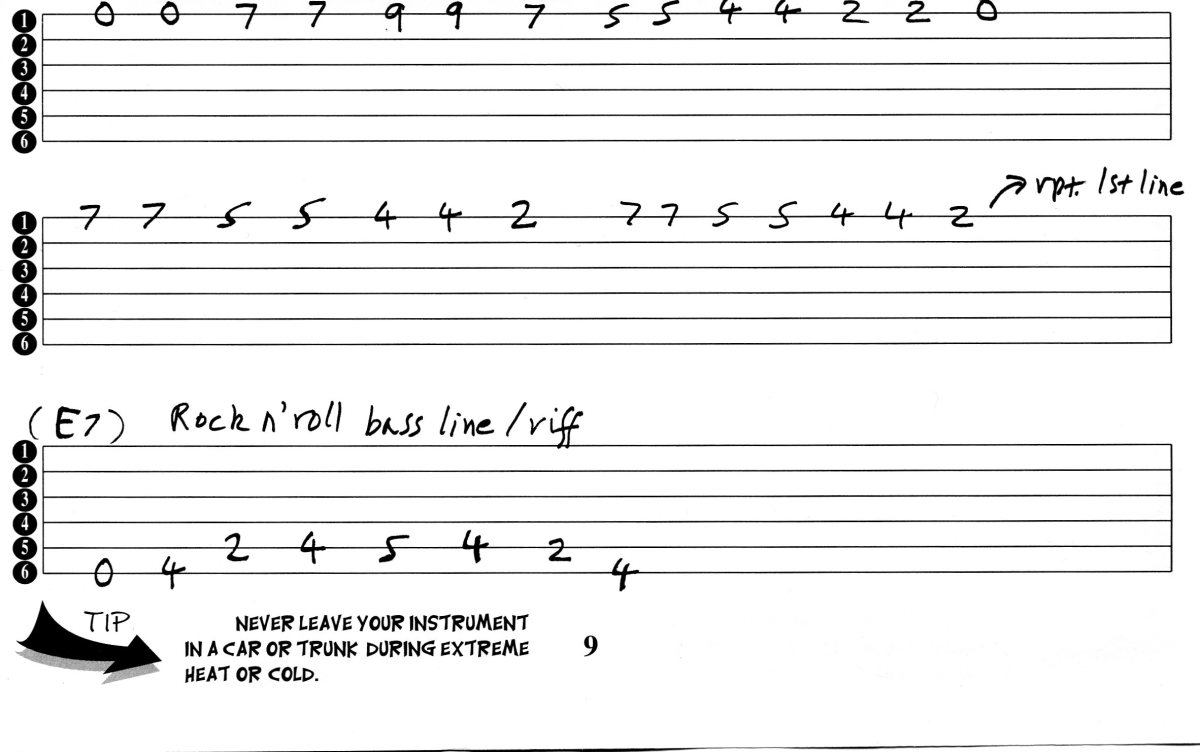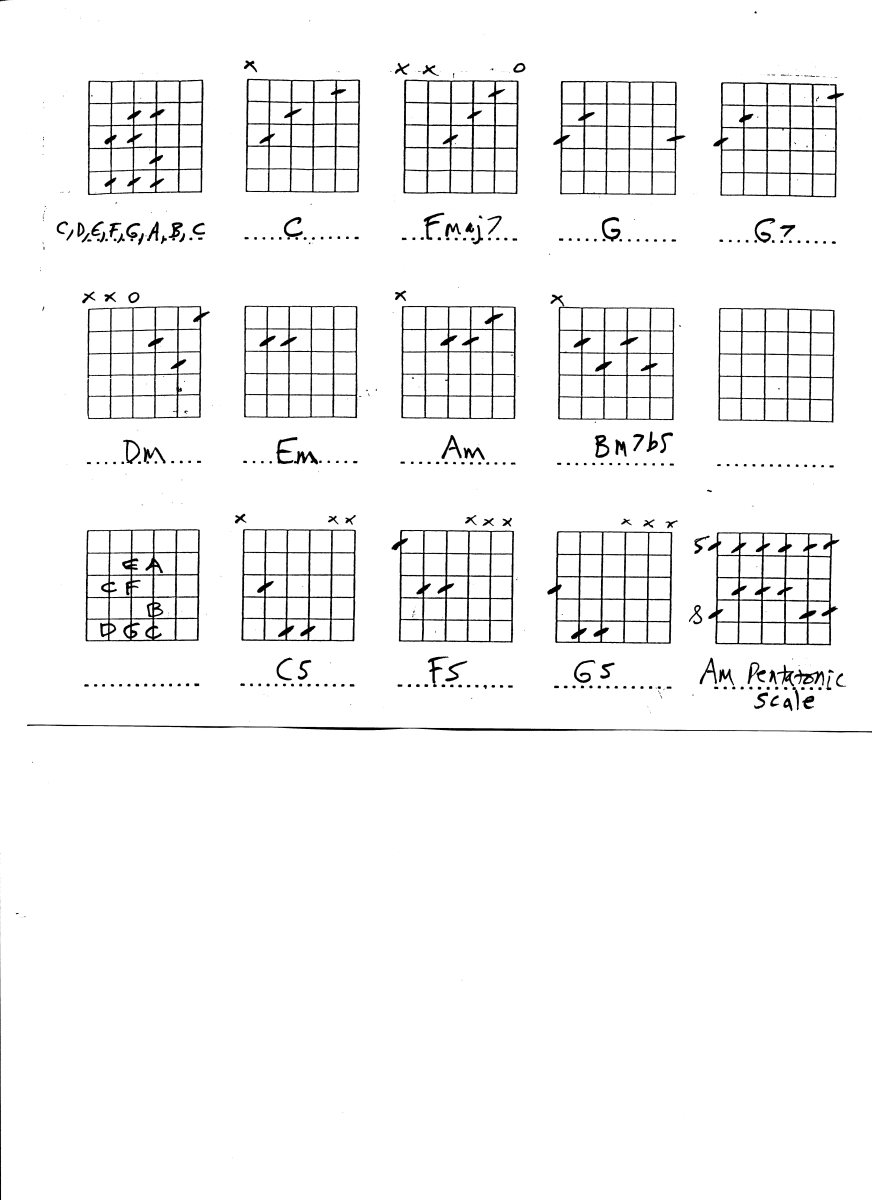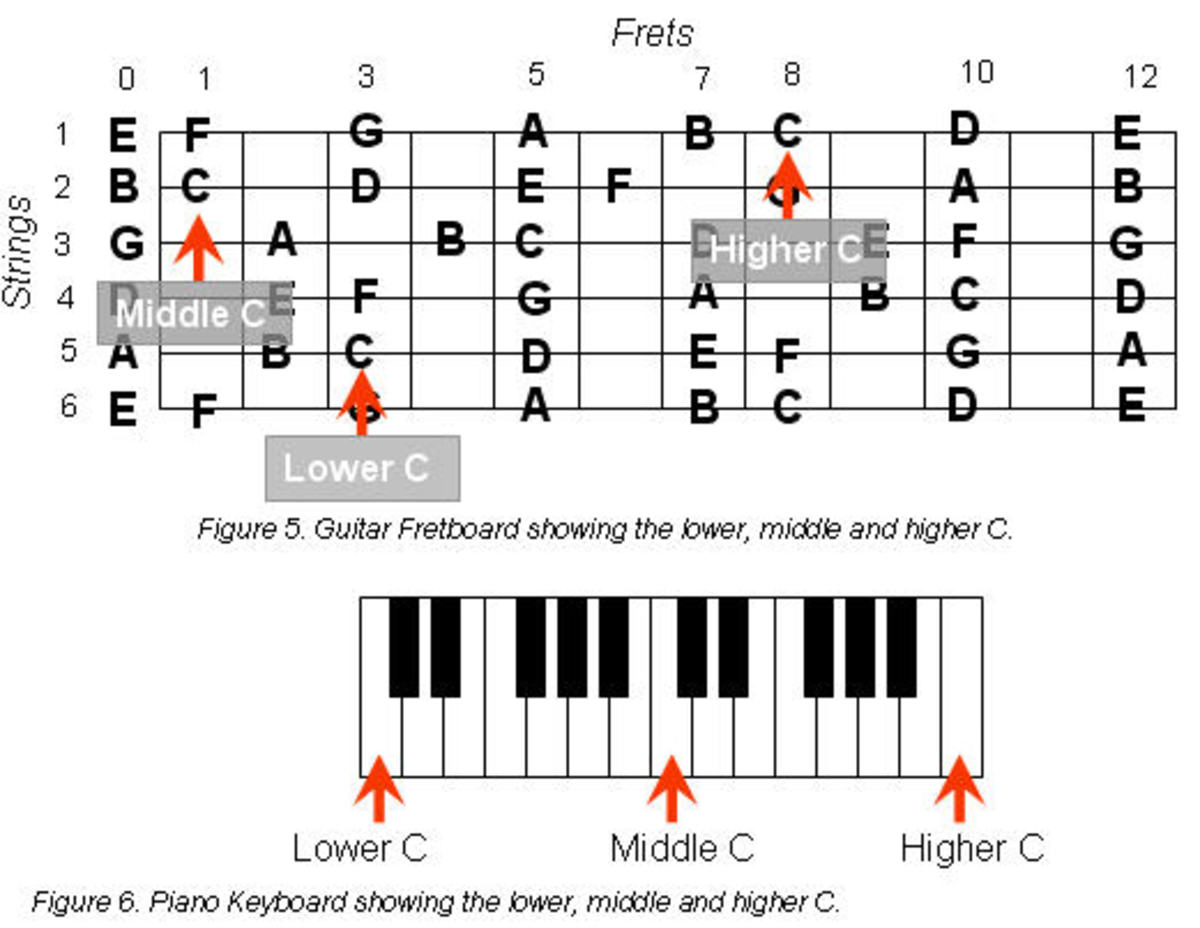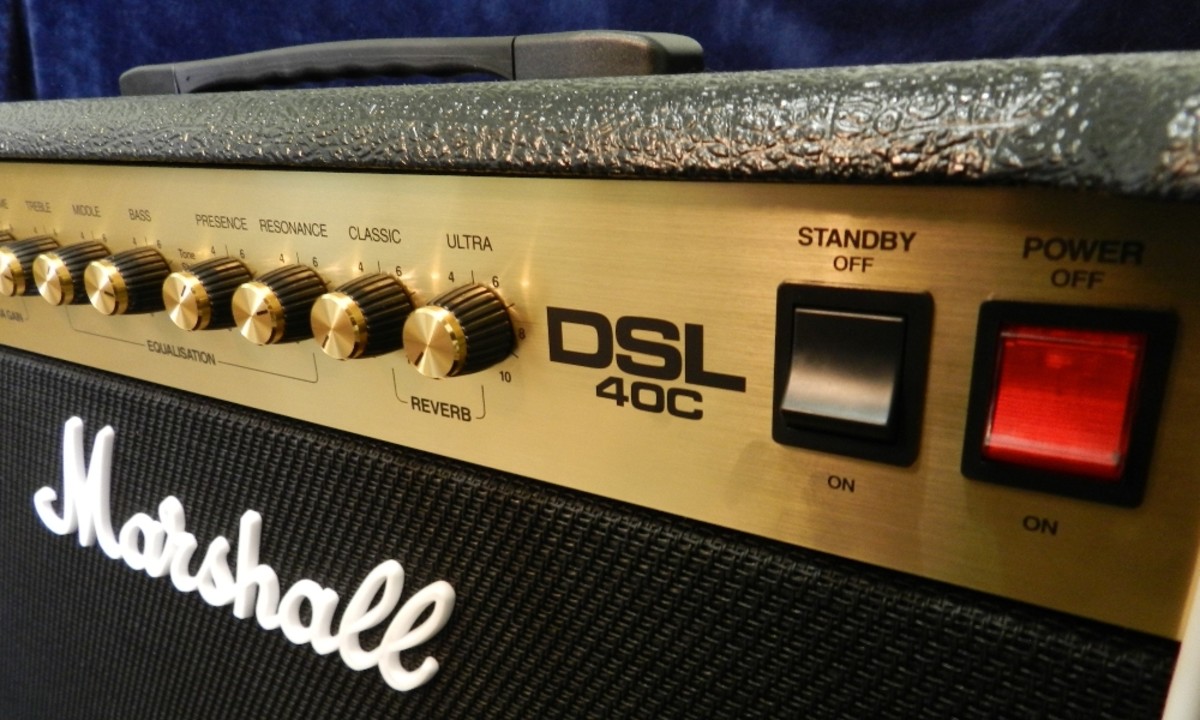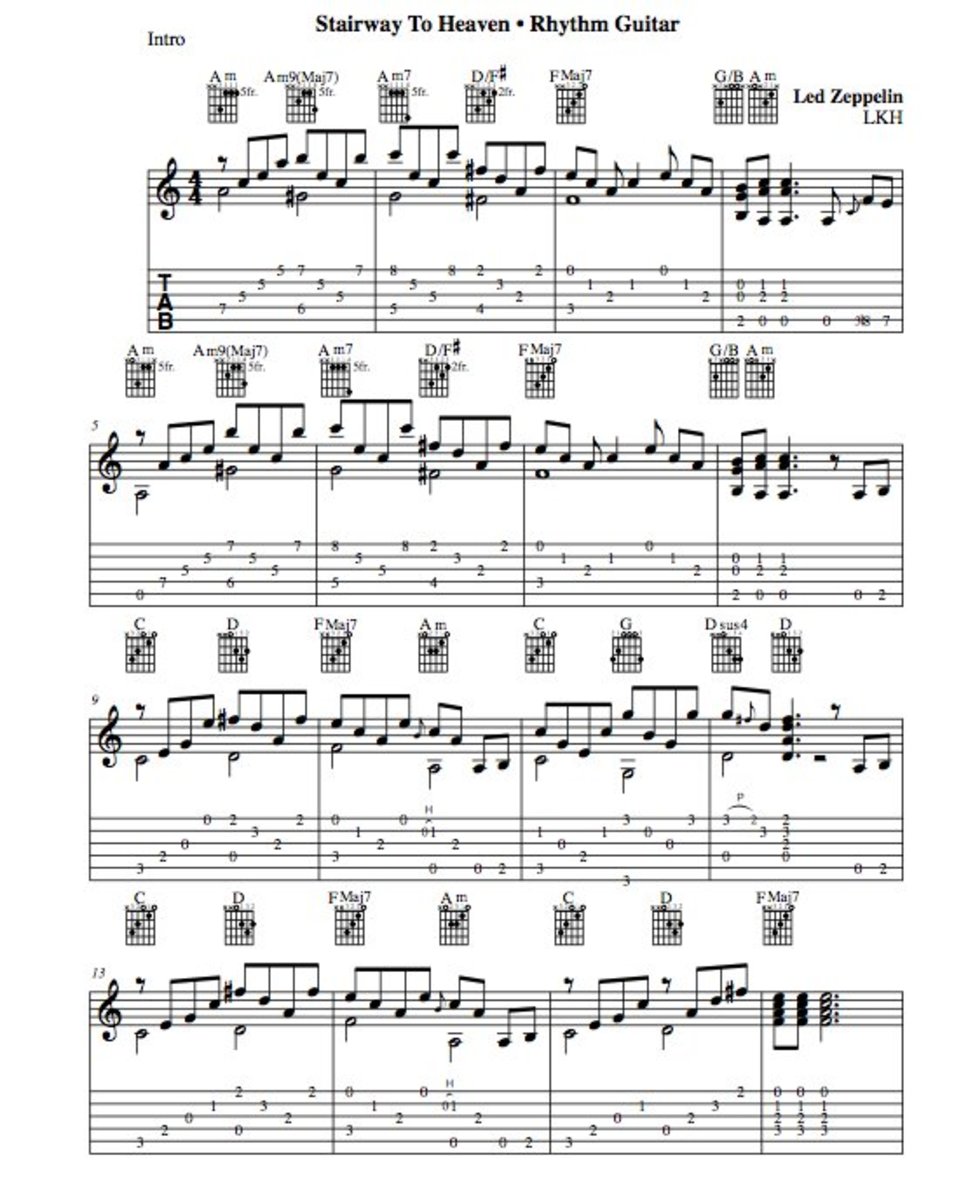Guitar Lesson: Scales in Tab
Guitar tab
Guitar tab is a very fast way of learning and notating music. Check out my other hubs on Guitar tab reading - basically each string on the guitar has a line dedicated to it, with the 6th string, the thickest string, as the bottom line, and the 1st string or thinnest string as the top line. Then the numbers tell you which fret to play in.
First example shows Frere Jacques in Guitar tab - notice that we are staying on one string nearly all the way through, and playing the tune by going up and down the guitar neck rather than across it, using different strings. There are many advantages with playing this way, not least because the tone of the string is consistent, and you can see more easily the intervals between the notes. This is written in the key of E, so it is using just the notes from the major scale of E. This E major scale is written out below.
You could play a simple accompaniment to this tune by just playing an E chord over and over, and just changing E, B7, E twice for the last two bars.
Guitar tab is a quick way to learn scales and tunes - but you should memorize everything as soon as possible, as you want to concentrate on your fingering and tone and not reading notes.
Major Scales on guitar
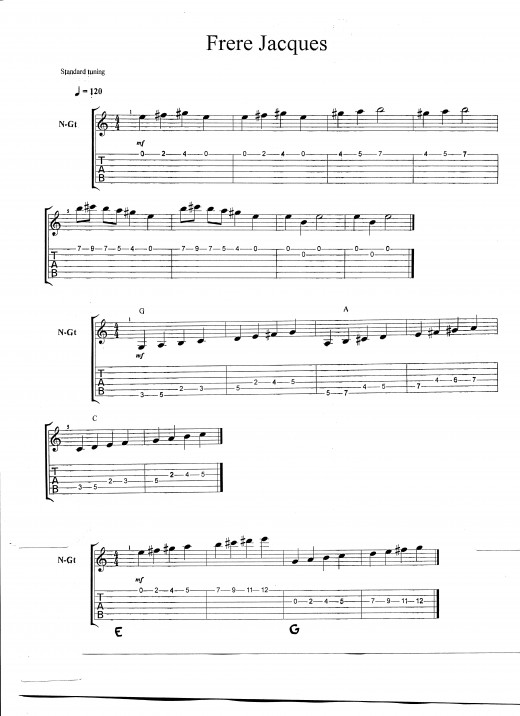
Scale info
Line 3 shows a G major scale (8 notes) followed by an A major scale. This is just the same pattern moved up the neck. If you move the same pattern across a string instead, so that the root note of the scale is on string 5, you get the C major scale notated here. This scale pattern can also be moved anywhere up the neck.
- Using just this one pattern, you can play all the major scales on guitar. Just by learning the note names on strings 5 and 6 you will be able to play all the major scales.
- For example, D is 2 frets up from C - so starting in fret 5 on string 5 will give you a D major scale, up one more fret would be E flat, etc.
- It's good practice to play the associated major chord before the scale, or have someone else play it for you while you play through the scale.
- C major scale contains these notes: C D E F G A B C
Last two scales
Here are some scale patterns going up the neck. As the guitar is tuned E A D G B E (string 6 first)
- Strings 1 and 6 give you an E major scale (one is higher in pitch)
- String 2 gives you a B major scale
- String 3 is G (as shown)
- String 4 is D
- String 5 is A
So what we've done here is a taken a minimum amount of information and applied it in lots of ways. Using this method you could probably learn all the major scales within 30 minutes.
Guitar Tab - When The Saints Go Marchin' In
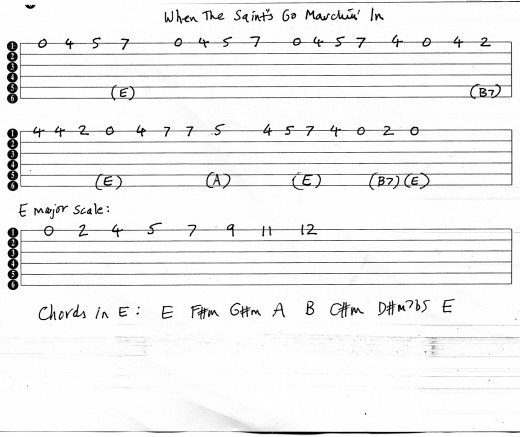
Playing tips
Here is another easy tab example, in the key of E - so all the notes come from the E major scale.
In brackets I've put in some chord changes, so you can get a friend to play the chords for you. Another good way to practice is to use a recording software like Garageband (part of the i-Life package for Mac)
It's a really good idea to sing the notes you are playing, it is making your practice time much more efficient:
- It's training your ear
- Improving your coordination
- Working on your memory
- Building hand strength
- Training your voice


